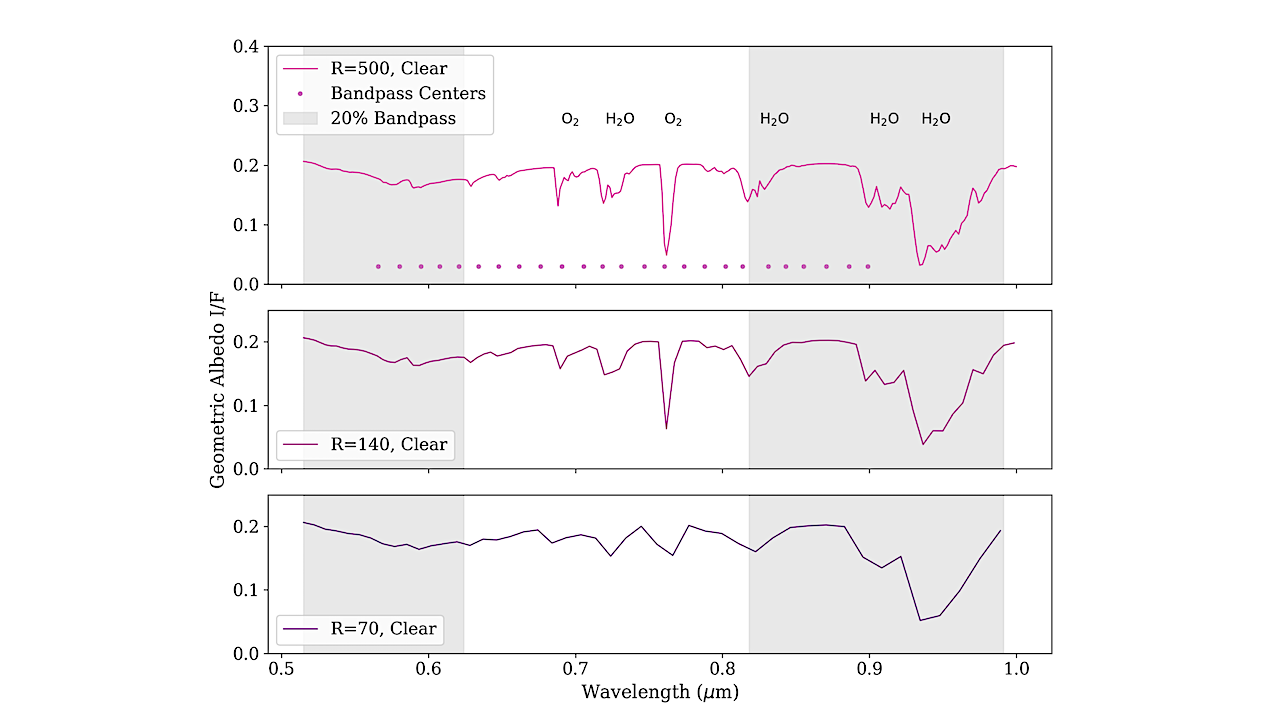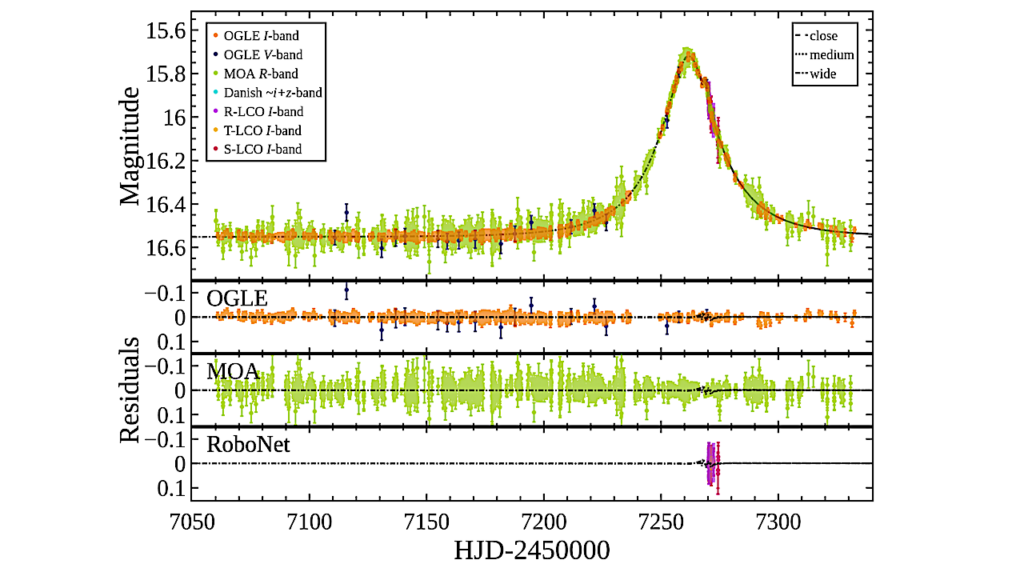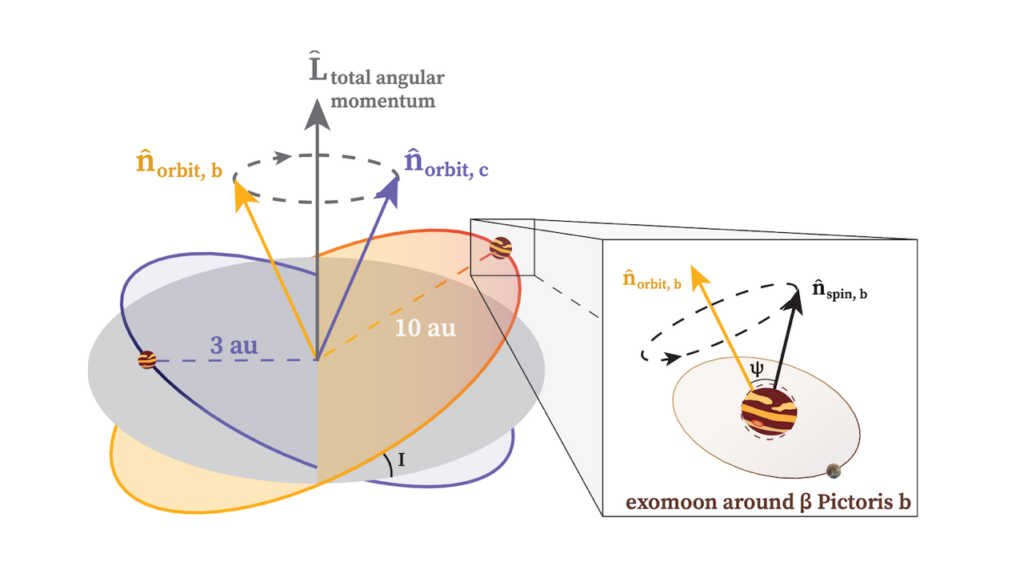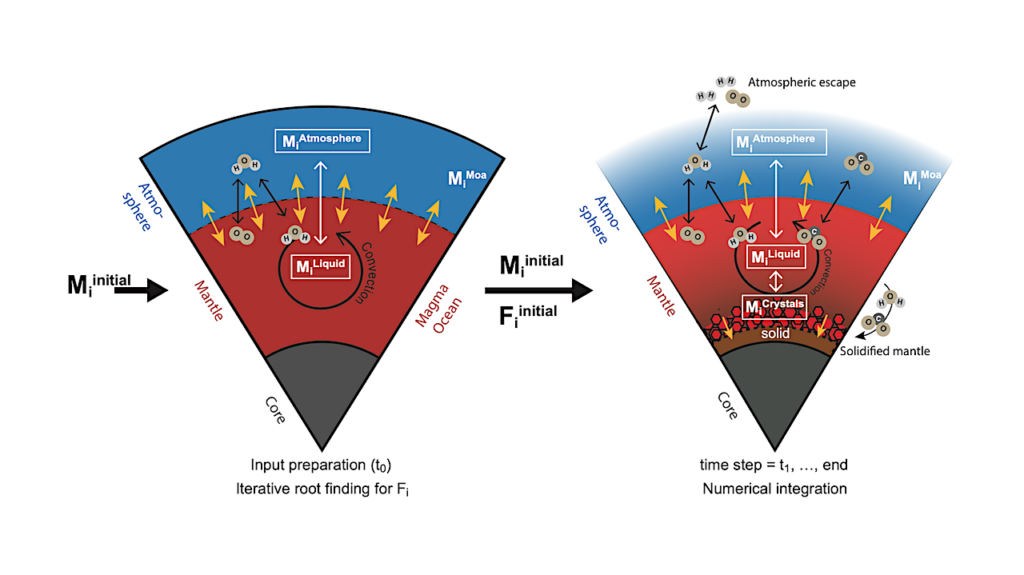Bayesian Analysis for Remote Biosignature Identification on exoEarths (BARBIE) I: Using Grid-Based Nested Sampling in Coronagraphy Observation Simulations for H2O

Detecting H2O in exoplanet atmospheres is the first step on the path to determining planet habitability. Coronagraphic design currently limits the observing strategy used to detect H2O, requiring the choice of specific bandpasses to optimize abundance constraints.
In order to examing the optimal observing strategy for initial characterization of habitable planets using coronagraph-based direct imaging, we quantify the detectability of H2O as a function of signal-to-noise ratio (SNR) and molecular abundance across 25 bandpasses in the visible wavelength range (0.5-1 micron).
We use a pre-constructed grid consisting of 1.4 million geometric albedo spectra across a range of abundance and pressure, and interpolate the produce forward models for an efficient nested sampling routine, PSGnest. We first test the detectability of H2O in atmospheres that mimix a modern-Earth twin, and then expand to examine a wider range of H2O abundances; for each abundance value, we constrain the optimal 20% bandpasses based on the effective signal-to-noise ratio (SNR) of the data.
We present our findings of H2O detectability as functions of SNR, wavelength, and abundance, and discuss how to use these results for optimizing future coronographic instrument design. We find that there are specific points in wavelength where H2o can be detected down to 0.74 micron with moderate-SNR data for abundances at the upper end of Earth’s presumed historical values, while at 0.9 micron, detectability is possible with low-SNR data at modern Earth abundances of H2O.
Natasha Latouf, Avi Mandell, Geronimo Villanueva, Michael Moore, Nicholas Susemiehl, Vincent Kofman, Michael Himes
Comments: 15 pages, 9 figures, 2 tables, accepted to AJ
Subjects: Earth and Planetary Astrophysics (astro-ph.EP); Instrumentation and Methods for Astrophysics (astro-ph.IM)
Cite as: arXiv:2308.00648 [astro-ph.EP] (or arXiv:2308.00648v1 [astro-ph.EP] for this version)
Submission history
From: Natasha Latouf
[v1] Tue, 1 Aug 2023 16:23:59 UTC (18,604 KB)
https://arxiv.org/abs/2308.00648
Astrobiology,








